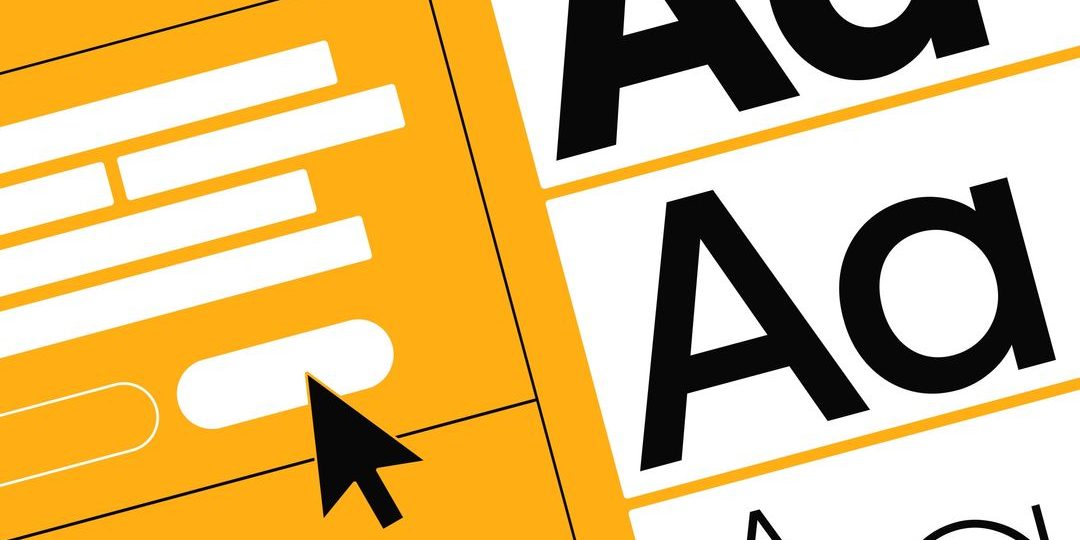Every element of your website counts in the digital sphere, where having an online presence is crucial, and this includes the typefaces you choose. At Pristine Connections, we understand the significance of captivating web design can Boosting Your Business success. We’ll explore the world of typography in this comprehensive guide to find the finest fonts for web design, giving you the tools you need to build visually attractive and powerful websites that connect with your target audience.
Understanding Typography: The Cornerstone of Web Design
Serif Fonts: A Touch of Elegance
Serif fonts, distinguished by their small decorative strokes, convey a sense of tradition and sophistication. Ideal for websites seeking to exude professionalism and refinement, serif fonts add a touch of elegance to your digital presence.
Sans-Serif Fonts: Modern Simplicity
On the flip side, sans-serif fonts offer a clean and contemporary aesthetic by omitting the serif strokes. Versatile and easy to read, sans-serif fonts are perfect for websites aiming for a sleek and minimalist look, enhancing readability across devices.
Display Fonts: Making a Bold Statement
Display fonts, characterized by their eye-catching designs and intricate details, are reserved for headlines or focal points. With their ability to command attention and inject personality into your brand, display fonts are indispensable for making a bold statement on your website.
Key Considerations For the Perfect Fonts for Your Website
Readability: The Foundation of User Experience
Above all, prioritizing readability is paramount when choosing fonts for web design. Opt for fonts that are legible across different screen sizes and resolutions to ensure a seamless user experience for your visitors.
Brand Consistency: Aligning Fonts with Identity
Your website’s fonts should mirror your brand’s personality and values, reinforcing brand identity. Whether it’s conveying professionalism, creativity, or friendliness, selecting fonts that align with your brand persona is essential for fostering brand consistency.
Compatibility: Ensuring Seamless Integration
While experimenting with fonts is exciting, it’s crucial to ensure compatibility across various web browsers and devices. Prioritize web-safe fonts or utilize web font services to guarantee seamless integration and consistent rendering across platforms.
The Top Fonts for Web Design Success
Times New Roman: A Timeless Favorite
As one of the oldest and most recognizable serif fonts, Times New Roman exudes authority and credibility, making it a popular choice for websites in the academic, legal, and publishing sectors.
Arial: The Sans-Serif Staple
Arial, a ubiquitous sans-serif font, is celebrated for its simplicity and versatility. Widely adopted for its legibility and neutrality, Arial is a safe bet for websites across diverse industries, from corporate to creative.
Impact: Commanding Attention
Impact, an iconic display font renowned for its boldness and impact (as the name suggests), is perfect for making a statement. Ideal for headlines, banners, or calls-to-action, Impact demands attention and leaves a lasting impression on visitors.
Innovative Fonts for Modern Web Design
Open Sans: Versatile and Accessible
Open Sans, a popular sans-serif font, strikes the perfect balance between modernity and accessibility. With its clean lines and extensive range of weights and styles, Open Sans is a go-to choice for websites seeking a contemporary yet approachable vibe.
Montserrat: Modern Elegance
Montserrat, a geometric sans-serif font, exudes modernity and sophistication with its clean, minimalist design. With its versatility and aesthetic appeal, Montserrat is well-suited for a wide range of web design projects, from corporate websites to creative portfolios.
Lato: Sleek and Stylish
Lato, another prominent sans-serif font, is revered for its sleekness and versatility. With its wide range of weights and styles, Lato offers flexibility in design while maintaining readability, making it an excellent choice for modern, stylish websites.
Implementing Fonts in Web Design: Practical Tips
Prioritizing Web-Safe Fonts for Consistency
To ensure consistent and reliable rendering across different devices and browsers, prioritize web-safe fonts that are universally supported. Web-safe fonts guarantee a seamless user experience and prevent unexpected font substitutions or display issues.
Utilizing Web Font Services for Variety
While web-safe fonts offer reliability, web font services provide a vast library of fonts for added variety and creativity. Services like Google Fonts, Adobe Fonts, or Typekit offer extensive font collections that can elevate your web design and enhance brand identity.
Maintaining Readability with Font Contrast
When selecting fonts, consider contrast to maintain readability, especially for users with visual impairments. Ensure sufficient contrast between text and background colors, as well as between font weights and styles, to enhance readability and accessibility.
Final Wording
Choosing the best fonts for web design is a critical aspect of creating visually compelling and effective websites. By understanding typography basics, considering key factors such as readability and brand identity, and selecting fonts that align with your website’s purpose and audience, you can elevate your web design and boost your business’s online presence. At Pristine Connections, we’re committed to helping you achieve success with expert web design solutions tailored to your needs. Ready to take your website to the next level? Contact us today!
FAQ’s
Fonts play a crucial role in web design beyond aesthetics as they contribute to readability, user experience, and brand identity. The right font choice can convey professionalism, creativity, or friendliness, influencing how visitors perceive and interact with a website.
Serif fonts feature small decorative strokes at the ends of characters, conveying a traditional and formal feel. Sans-serif fonts, on the other hand, lack these strokes, offering a clean and modern appearance that’s often preferred for digital screens due to enhanced readability.
For websites targeting a younger audience, designers may opt for playful and vibrant fonts that reflect the brand’s energy and appeal to the demographic’s preferences. Examples include handwritten or graffiti-style fonts that evoke a sense of creativity and youthfulness.
Yes, the choice of font can significantly impact user engagement and conversion rates on a website. Fonts that are difficult to read or don’t align with the brand’s image can deter visitors and lead to higher bounce rates. Conversely, well-chosen fonts can enhance the overall user experience and encourage longer site interactions.







